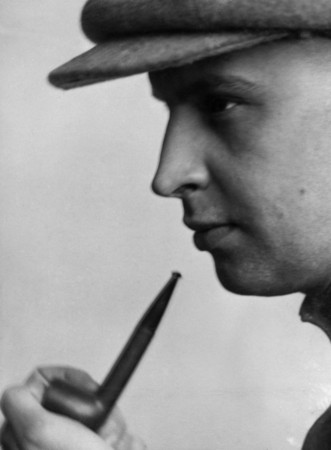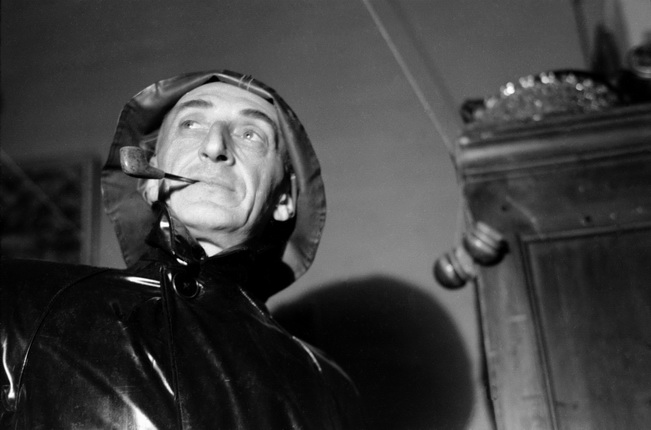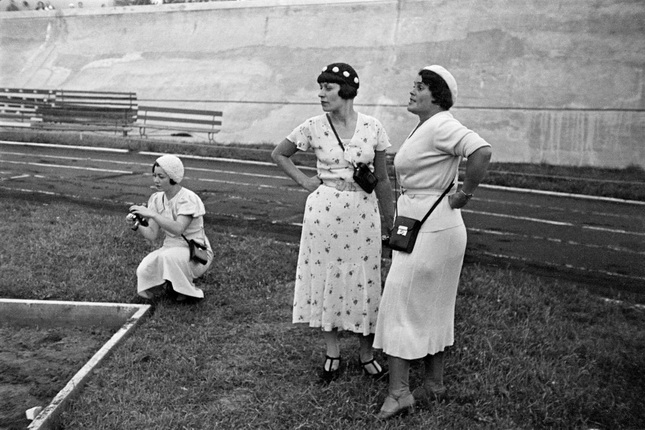The rodchenko’s circle. Stylish people










Y. Brodsky. Alexander Rodchenko during the shootings on the stadium “Dinamo”. Moscow. 1934. The collection of the Moscow House of Photography
Mikhail Kaufman. Alexander Rodchenko in the studio dressed in the industrial costume against a background of the spatial constructions. 1924. The collection of the Moscow House of Photography
Mikhail Kaufman. Alexander Rodchenko with a pipe. 1922 – 1923. The collection of the Moscow House of Photography
Alexander Rodchenko. Varvara Stepanova on the sofa. March 5, 1928. The collection of the Moscow House of Photography
Alexander Rodchenko. Lilia Brik in gauzy dress. 1924. The collection of the Moscow House of Photography
Alexander Rodchenko. Repair of the wheel. From the ‘Voyage to Leningrad on the Mayakovsky’s car Renault’ series. 1929. Modern print from artist’s negative. MAMM collection
Alexander Rodchenko. Photographer Evgeniya Lemberg on the shooting at the water stadium ‘Dinamo’. Moscow, 1932. Modern print from artist’s negative. MAMM collection
Alexander Rodchenko. Photographer Alexander Khlebnikov. 1950. Modern print from artist’s negative. MAMM collection
Alexander Rodchenko. Three women-reporters: Krasnyavskaya, Elizaveta Ignatovich, Evgeniya Lemberg. 1934. Modern print from artist’s negative. MAMM collection
Alexander Rodchenko. Lilya Brik. 1924. Modern print from artist’s negative. MAMM collection
Kaliningrad, 26.02.2021—23.05.2021
exhibition is over
Kaliningrad Museum of Fine Arts
Moscowskiy prosp. 60/62
http://www.kaliningradartmuseum.ru/
Share with friends
The collection of the Moscow House of Photography
Exhibition shedule
-
18.03.2005—10.04.2005
Moscow
Moscow Museum of Modern Art
-
6.06.2013—30.06.2013
Voronezh
Kramskoy art museum of Voronezh region
-
17.10.2013—2.12.2013
Kazan
Resource Center (The State Museum of Fine Arts of Tatarstan Republic)
-
6.03.2015—5.04.2015
Veliky Novgorod
Veliky Novgorod Center Dialog
-
20.06.2015—30.08.2015
Saint Petersburg
Erarta Museum of Contemporary Art
-
28.01.2016—27.03.2016
Samara
Samara Regional Art Museum
-
7.09.2017—1.10.2017
Saratov
Saratov Regional Museum of Local Lore
-
26.02.2021—23.05.2021
Kaliningrad
Kaliningrad Museum of Fine Arts
For the press
We rarely notice how famous artists, writers or musicians are dressed. We remember their faces, conversation, different events. In reality, however, every man has his own style, which manifests itself, among other things, in clothes.
The way a person behaves, talks, looks or dresses becomes especially significant when there is a drastic break with the past, a radical change in cultural tradition. One example of this would be the 1920s, when clothes were influenced by the Futurist or Constructivist aesthetics. In some cases it was important to amaze the audience, in others — to demonstrate self-assurance. The circle of friends and acquaintances of the photographer and artist Aleksandr Rodchenko and of his wife Varvara Stepanova in terms of dress was marked by solid rationalism and, at the same time, by artistic freedom of pose and gesture.
It is interesting to take a closer look at the people of this milieu depicted on Rodchenko’s photographs between 1924 and the 1940s. The men belonging to the movie industry, such as Aleksei Gan, Lev Kuleshov or Boris Barnet, are dressed with a tinge of military mechanisation. Leather coats and jackets, puttees, cloth caps, sometimes dashingly cocked, motorcycle goggles and gauntlets. All these are elements of professional uniform. A director or a documentary cameraman usually spends most of his time outdoors. His clothes should protect from bad weather and at the same time should be easily spotted by the crew. It is a combination of a certain degree of affectation and rationalism. Aleksandr Dovzhenko is the only person on Rodchenko’s photographs, who is dressed somewhat differently — in a more conventional costume. But even he does not look commonplace, because of the expressive hairstyle, turn of the head and lighting.
Photo-reporters are more moderately dressed. Some, like Vadim Kovrigin, wear a service-jacket, others — an ordinary Moscow-made suit or simply trousers with a white shirt. These people must not attract too much attention. Their object is to observe. Even the postures of the photographers seem somewhat alienated from the object they are shooting, be it a stadium or a construction site. Writers look, so to say, more domestic. Sergei Tretiakov is wearing a long shirt of a particular style, fashionable in the 1920s, a design made popular by Leo Tolstoy. Only Vladimir Mayakovski is dressed in a spick and span suit as if he just returned from a public debate on literature. Being exceptionally neatly dressed in order to look perfect on stage is a weapon as important for him as a sharp word.
Women of this circle also have their individual style. A full shot of one of Rodchenko’s well-known photographs, «Portrait of my Mother», shows some things about her attitude towards clothes. She wears a dress typical for an aged woman, who lived at a time when every social group could be identified by its costume. State officials wore long overcoats; people from the intelligentsia of a common origin, the so-called raznochintsy, went along with their shirts outside their trousers, the latter stuck into the boots; working women were clad in long dark-coloured dresses made of soft flannel or spotted cotton. Only seven years have passed since the revolution, but on Rodchenko’s photographs one does not see practically any traces of this division in costume. Something else appears — a desire to look modern. Rodchenko invents his own outfit of an engineer-constructor with many pockets for instruments, which he wears while teaching students at the VKhUTEMAS. Posing for Mikhail Kaufman, Rodchenko readily demonstrates this «uniform», which Varvara Stepanova made after his own design. Stepanova knew well how to cut out and sew; she was taught this in school in the pre-revolutionary years. In 1916 in Moscow she bought a Zinger sewing-machine, which in those days was something really valuable.
Other photographs show a completely different Rodchenko. In 1925, during the opening of the Decorative Arts Exhibition in Paris, he looks like an elegant man of the world wearing the inevitable three-piece suit and a hat. Screen test for Sergei Eisenstein’s film «Old and New» show Rodchenko and Stepanova impersonating a pair of foreigners on a visit to Russia. The photographer is wearing a leather coat and a cap-helmet (Rodchenko had this coat for thirty years). Stepanova is laughing heartily, her head with a large cap drawn back. In this work they look like some Dutch architects or artists from the De Stijl Group.
In the 1930s and 1940s Rodchenko still preserved his personal style in clothes. He grew bald early and it is hard to imagine him with long hair. Mayakovski, Tretiakov and the architect Aleksand Vlasov had the same hairless heads. Part of Rodchenko’s wardrobe was bought in stores, for example, puttees, shoes, ties; part — made by Stepanova using thick wool or flannel. Any garment was expected to be comfortable and serve for a long time. All his life Rodchenko’s dress was influenced by Constructivism, with a single style for different occasions.
Stepanova, it seems, was more flexible concerning her attire. She knew how to improvise when her husband was photographing her — sometimes as a young Komsomol girl in a kerchief, sometimes an office lady or a Frenchwoman.
When in the spring of 1924 Lilia Brik came to Rodchenko’s and Stepanova’s studio to be photographed, it appears that she brought with her a whole suitcase filled with clothes. There was a woollen conservative-looking suit, created by her tailor. Young Luella Krasnoshiokova posed alongside Lilia in a costume of the same fabric. There was also a silk goldish dress and a see-through black gauze dress, which is worn by Lilia Brik with nothing underneath, reminiscent of the style of Isadora Duncan. Some dresses made of course linen were created in Lamanova’s atelier. Lilia also purchased a cap, gloves and a special dress to drive her «Renault». She was proud to state that she was the only woman in Moscow, except for the French ambassador’s wife, to drive an automobile.
Every member of Rodchenko’s circle is marked by his or her unique style in clothes, reflecting the interior style of a particular individuality. These photographs faithfully represent both of them.
A. N. Lavrentiev



